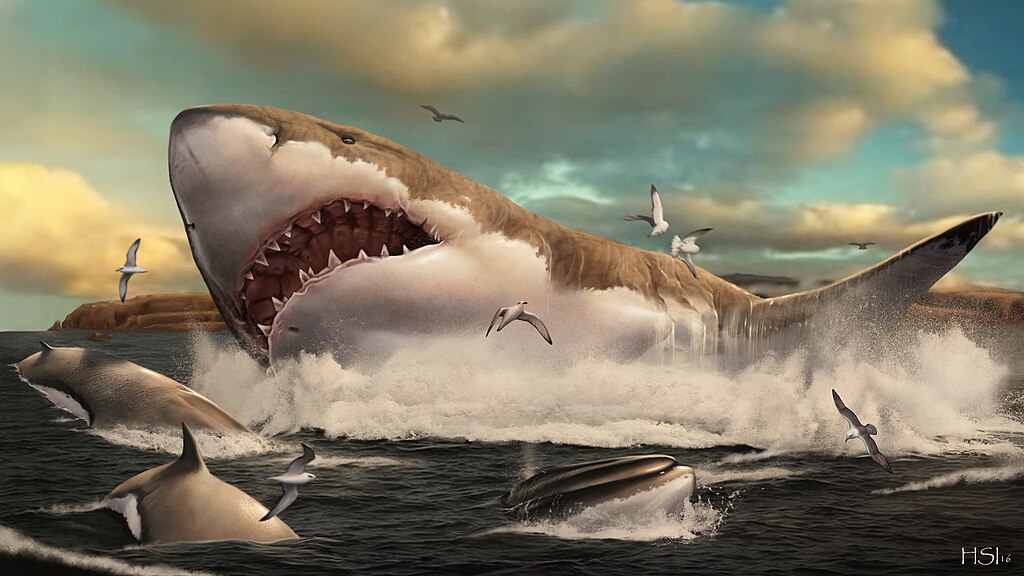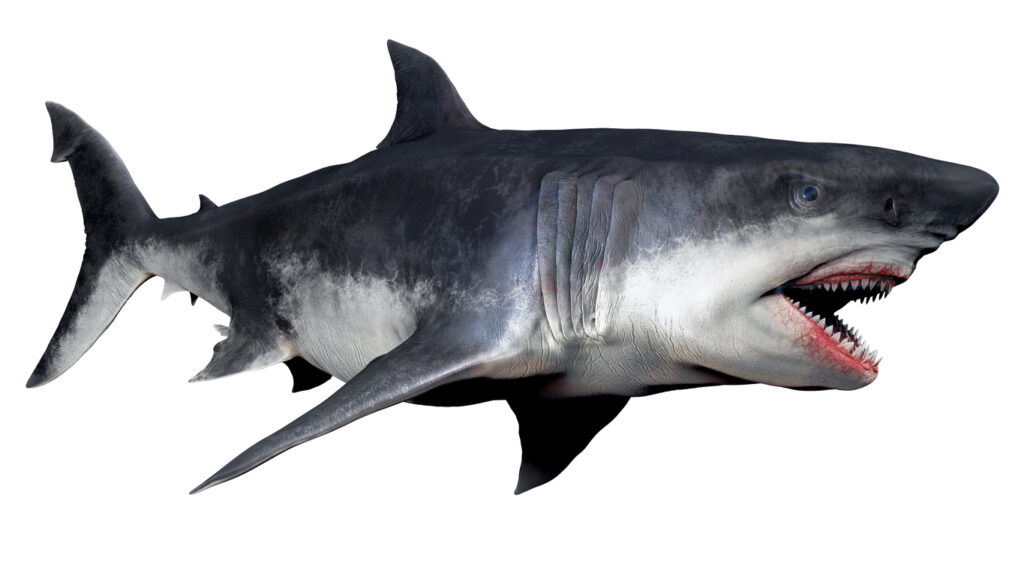Megalodon has always been imagined as the ultimate underwater tank—massive, bulky, and terrifyingly unstoppable.

However, new research is giving that iconic image a bit of a trim. A recent study suggests this ancient shark may have been more streamlined and less chunky than we’ve pictured for years. While there’s no 100%, sureproof way of knowing given that we’ve got limited data to work with, we can start to make a pretty good guess the more we learn about them. Here’s what scientists are now saying about the true shape of the ocean’s most famous predator, and why it matters more than you’d think.
1. The big update: less bulky, more built for speed.

Researchers used new 3D models based on fossilised vertebrae and comparisons with modern sharks to reshape our image of the megalodon. The result? Still massive, still terrifying, but probably not the bloated brute we once thought. The updated model suggests a longer, leaner body. Think more aerodynamic submarine than lumbering tank. This shift could mean megalodon was built for more than just power—it may have been surprisingly agile for its size.
2. The old image came from guesswork.

For decades, megalodon’s shape was based on the modern great white shark—just scaled up. But that comparison only goes so far. Great whites are related, yes, but megalodon likely belonged to a different branch of the shark family tree entirely. That means the classic big-bellied version of megalodon was partly speculative. This new study gives us a clearer, more biomechanically informed picture—one rooted in actual bone structure and muscle placement.
3. Less bulk doesn’t mean less terrifying.

Before you start thinking this makes the megalodon less of a monster—don’t. A leaner shape doesn’t mean weaker. It might actually make it scarier. This build would’ve allowed it to move faster through the water and ambush prey with greater precision. In other words, it wasn’t just a slow-motion juggernaut. It may have been fast, efficient, and still big enough to swallow dolphins whole. Just… with better streamlining.
4. The new model could change how we understand its hunting style.

A bulkier megalodon would’ve relied on brute force and surprise. But a leaner version might have been more of a high-speed chaser, capable of long-distance swimming and quicker bursts of movement. This opens up new theories about how it hunted and what kinds of prey it targeted. It might’ve been more flexible in strategy than we thought—less ambush predator, more oceanic stalker.
5. It also affects how we estimate its energy needs.

A thicker, heavier body means higher energy demands, but a leaner megalodon might’ve required less fuel to stay alive, which would affect everything from its feeding habits to its range. That could mean it didn’t need to eat as often as we once assumed—or that it could go longer between big kills, roaming vast areas of ocean without running on empty.
6. Megalodon might’ve been a better long-distance swimmer.

The revised body shape suggests it may have been built more like a modern mako shark—fast, agile, and capable of covering huge distances. This could explain how it roamed oceans worldwide despite the energy cost of being enormous. If it had a more hydrodynamic body, that global reach starts to make more sense. It wasn’t just big—it was efficient, which may have helped it dominate for millions of years.
7. It challenges pop culture’s favourite version.

From Shark Week to blockbuster movies, the megalodon has always been shown as a chunky, thick-bodied monster lurking in the deep. However, this study pokes holes in that Hollywood version. It’s still massive, but maybe not quite as wide as imagined. If anything, the real version might’ve been scarier for how normal it looked. Just a sleek giant gliding through the water with silent, lethal confidence.
8. Fossil evidence is limited, but improving.

Because shark skeletons are mostly cartilage, megalodon fossils are rare and usually incomplete. Most of what we have are teeth and a few vertebrae. That’s why earlier reconstructions were so rough. This new study makes better use of the limited fossils by applying modern scanning tech and simulation tools, which let researchers explore how the bones would have supported muscle and movement in life.
9. It’s part of a broader scientific change.

We’re in an era of rewriting old assumptions about prehistoric life. As tech improves and fossil analysis gets more sophisticated, creatures like megalodon are finally getting updates that reflect how they actually lived—not just how we assumed they did. This leaner megalodon is one of many examples of palaeontology moving beyond guesswork. And it’s exciting to think about how much of the prehistoric world we still haven’t got quite right.
10. Lean or not, it’s still the stuff of nightmares.

Megalodon’s size alone still earns it a place in oceanic horror. Whether it was barrel-shaped or more torpedo-like, this was an apex predator the size of a bus with jaws powerful enough to crush whales. So no, this study doesn’t make it less impressive. It just makes it more real—and in a way, more dangerous. Because now, we know it wasn’t just big. It was built for the kill.